Makers 1-on-1 is our original interview series featuring today's makers and DIYers. We're sitting down with new makers every week to learn more about their projects, how they acquire information, their purchase processes, and their passions.
This week, we’re interviewing April Couch, a zentangle artist and illustrator with a passion for patterns. Owner of Totally Tangled Creations, April’s intricate designs draw from the zentangle technique that relies fine lines and repeating patterns. To create her designs, she uses pens, ink, acrylics, and pencils to put her designs on wood, paper, and more. If your brand sells to artists and illustrators, this 1-on-1 interview with April will give you some helpful insights into connecting with makers like her.
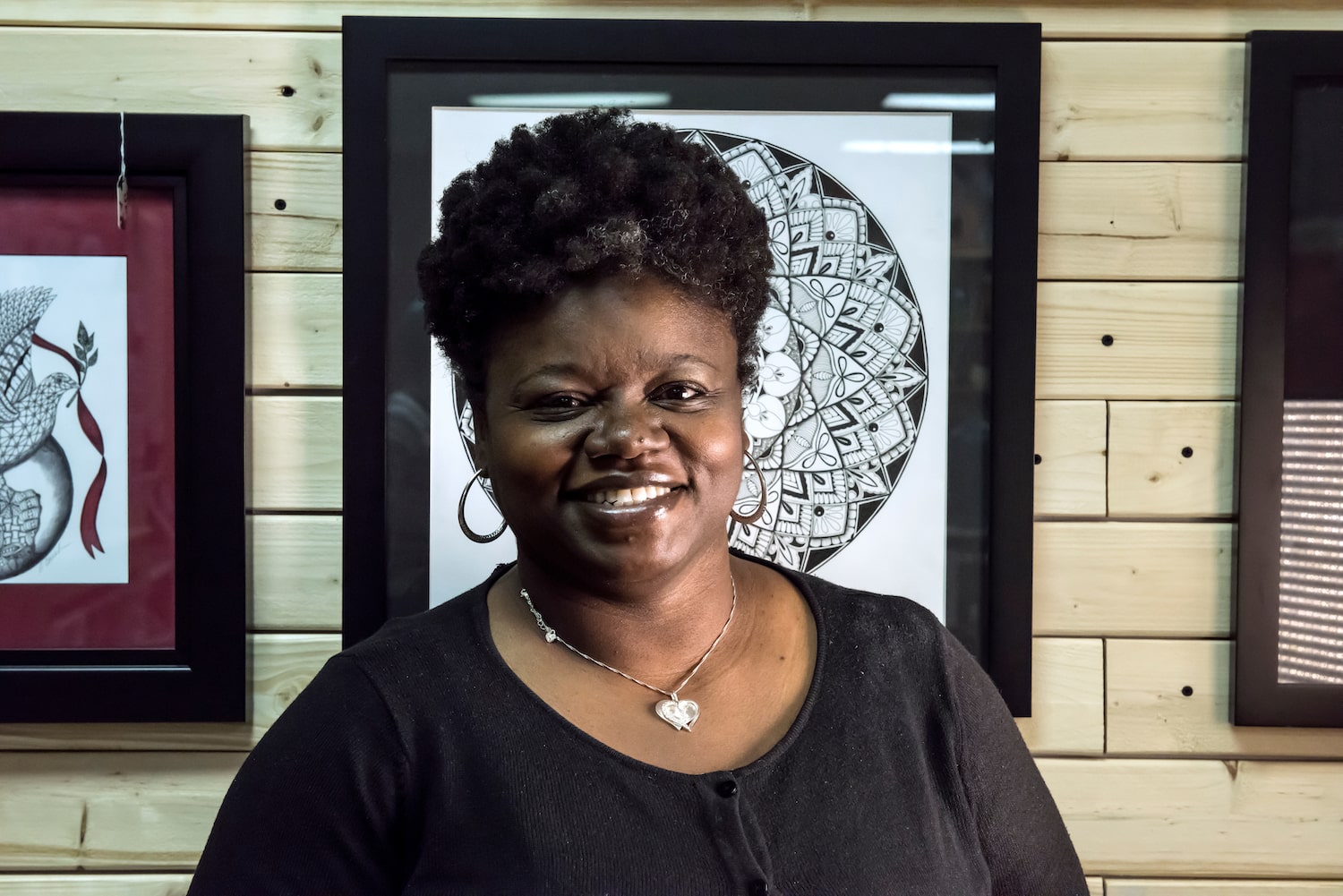
What's your name and what do you do?
My name is April Couch, I do zentangle-inspired art, or zen-inspired art, which is really fine-line drawing or doodling on steroids. I started off doodling at a very very young age. It just culminated, when I was trying to figure out what I wanted to do when I grew up, into all this.
How and when did you get started?
I started doing this about seven years ago. And it came about as a result of my not being able to really focus or stay awake at church. I realized that church was the only place that I had to sit and listen and not doodle. If I’m on the phone I’m doodling, if I’m just watching TV I’m doodling. I realized that I kind of have a mind-to-hand connection, I need to be moving my hand for me to focus and to have clarity. And then soon after that, I just started doodling in my notes at church, I’d be taking notes on the sermon, then I’d just doodle around the page.
I walked into Pat Catan’s and I just saw this book and it said “zentangle” and it looked just like the doodles I had been doing. So it just gave me an organized way of doodling. And once I figured that out, I joined a zentangle club, I went to a beginning class. And the instructor was like, “What are you doing here?” And I said, “I came to take the class.” She said, “You don’t need this class.”
So we had our first art show of the group, and I submitted 12 pieces and by the time I got there 11 of the 12 had sold. Literally, I stood there and started crying in the middle of the floor and I was like, “I figured out what I want to do when I grow up! I wanna draw, I want to be an artist!”
I could have gone to art school, I actually had opportunities for art scholarships and decided to go into business instead. Therefore, at age 43 I officially, I guess, entered the art world and started trying to sell my art. It’s just grown and grown and grown since then.
What steps go into a drawing?
So I start off with a pencil drawing. Typically I am reverting realistic things into “zen mode.” So if you take the bull for example [she gestures to a T-shirt on the wall with a bull drawing], I actually looked at a picture of a real bull and I sketched my version of what I wanted the bull to look like. And then I went back in and started defining the bull’s face based on the shadow that was actually on the animal and then I go back and add all the line detail into those spaces that I’ve separated to form the features of the animal.
What materials do you use?
It depends on what I’m doing. If I’m doing a pen and ink drawing, I really just have my paper, and I use Micron Pens, anywhere from a .005 all the way up to a .08. I also go back and use graphite pencils for shading. If I’m working on a piece of wood, I use an Identi-Pen, Sakura makes them. If I just have a plain wood piece, it’s just pen and ink. It’s ink to wood, and I’ll go back and put a sealer on it depending on what the use is going to be. Otherwise I use acrylics, I use polyurethane. So then, if it’s a painted piece I actually use chalk paint, love it. It’s self-leveling, which gives me a smooth base, and then I can go back and buff it out until it’s super smooth and easier for me to draw on. Then once that piece is finished I’ll go back and put on sealer.
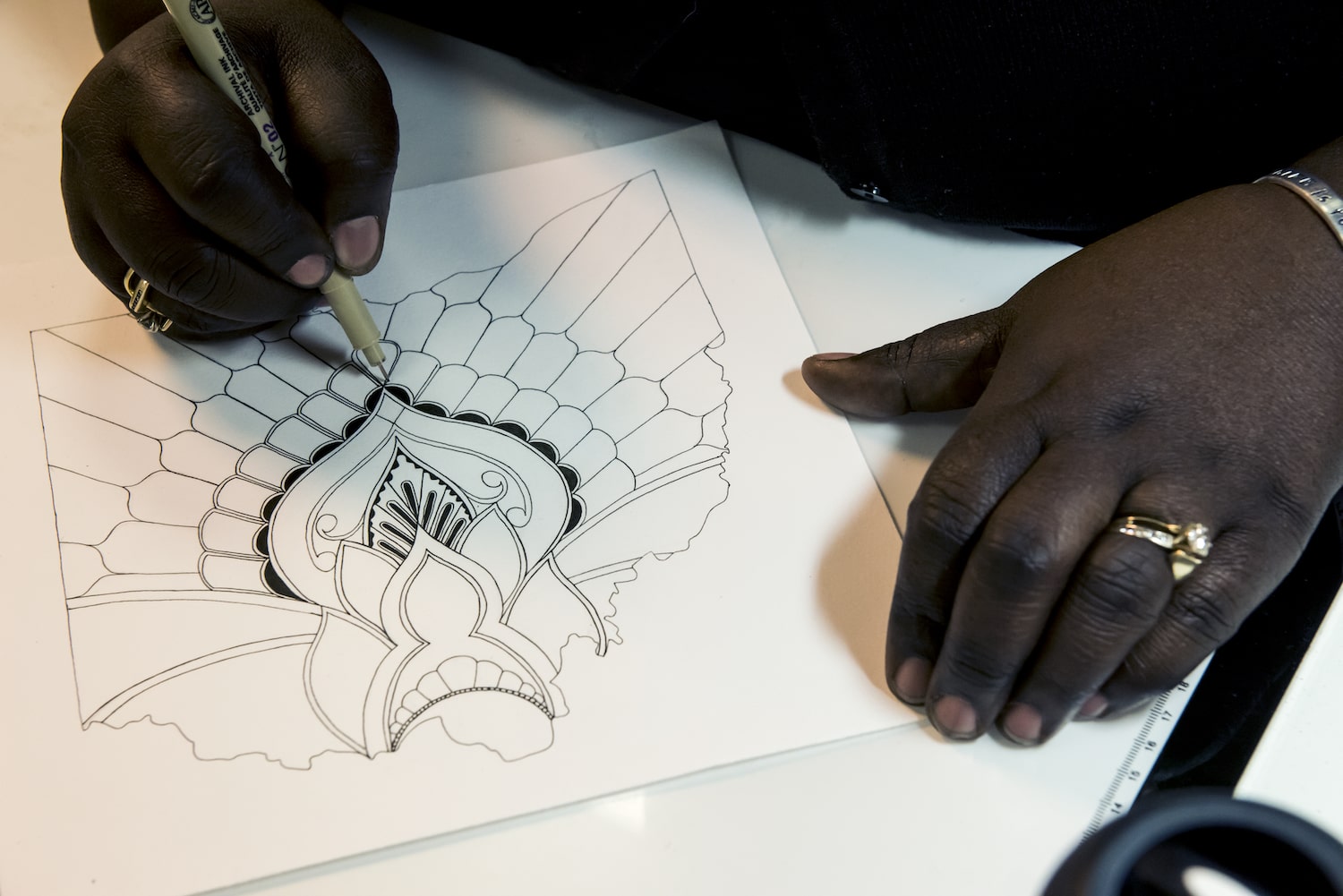
What's important to you in a product, what's your research process like?
Typically, zentangle is done with Micron Pens and I find that I prefer Micron Pens. They dry quickly, if I’m working fast I don’t have to worry about them smearing. So the Sakura line of pens work for me. I use the Micron Pens for my pen and ink drawings, I use the Identi-Pen for my wood drawings and then for my canvas drawings, I use Permapaque, and they’re all made by the same company. But, a lot of trial and error. I tired Sharpies, I tried Le Pen, I tried all kinds of pens before I landed on a family of pens that just works for me. A lot of trial and error.
How do you purchase your materials?
I order some things online. For example, my Identi-Pens, I order 50 at a time, I always order them online, I order them wholesale, because I use so many of them. It’s not worth it to me to go to Pat Catan’s and buy a pen every other day.
Also some of the wood pieces I find online, but I also have someone that I met at an art show who is a woodturner and we partner together a lot with certain pieces.
Do you do research?
I do. I’m always trying something new, I’m always trying a new pen, I’m always trying new paints. I always go and see what other people are saying they’re using and see if it’ll work for me. I always do research before I try something new. I tend to wind up back with something I already use.
What social media platforms are you active on?
I’m active on Facebook, Instagram, and kind of sort of on Twitter.
On Facebook and Instagram I’ll do in-process pictures for example. I’ll take the bull again, I showed the initial pencil drawing, and then I showed a progression of starting to add the detail, and then I showed, of course, the finished product.
I have a color day. So today I might paint everything yellow, everything that I’m going to do yellow for a few weeks, I paint yellow in one day. And then the next day, I paint blue, then I’ll paint red. Because it’s easier to do it that way and not go back and forth. And I like to take pictures like that that shows what I’m doing.
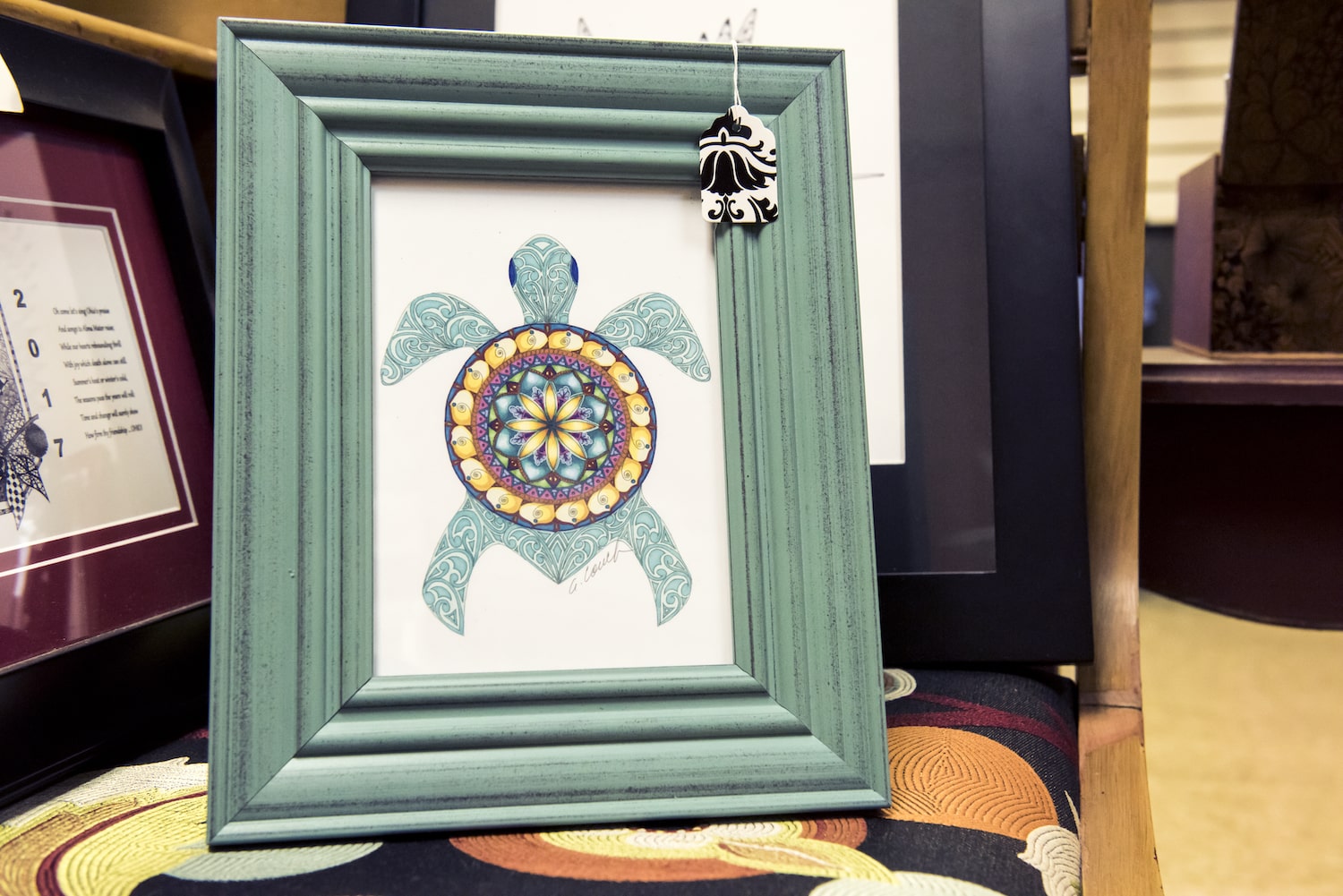
Where do you get inspiration?
I get a lot of inspiration from just talking to people and what people are interested in. I keep a log, especially of the animals, everybody has their favorite animals. Everything I do starts off black and white. Everything that you see in color, my daughter has added the color. She’s an art student at the University of Akron.
A lot of people say, “I create whatever I feel.” Well I do that too, but I also listen to what people are asking for. Because if a lot of people are asking for it, that means a lot of people are going to buy it. So many artists don’t think like that. I look at art totally different, I have a business degree, so my way of looking at art is totally different from what a lot of people do. I want my art to be able to support me even after I can no longer do it. I’m trying to make a living at doing something that I love. I think that’s where so many of us lose sight of that.
When I started doing this, with a business in mind, I said I was going to draw all this stuff, but then what? So, I did research. I went to the art museums, I looked in the museum stores. What really clinched it for me, my daughter and I were at a Monet exhibit and we went into the museum store, and they had Monet on bags, Monet on T-shirts, Monet on cards. And I was like, “Monet is dead.” So I said why can’t I do that as an artist? Why can’t I put my art on T-shirts and on bags and make posters and cards and bookmarks and journals and coloring books? And literally, that has been the formula for success. I started doing this about seven years ago as a hobby, and as of 2014 it has been a full-time job. It just keeps growing and growing, I think that formula is really and truly working for me. My goal is to get my art in the hands of as many people as possible. My goal is to build true and meaningful relationships with my customers, that’s why we have the art bar here, that’s why we added classroom space, I want it to be interactive when people come here. I don’t want people to feel like they have to buy something every time they come here. I want them to feel comfortable to just come and sit and color. I provide everything, I don’t charge anything. I can truly say, when I see my customers outside of here, it’s genuine, because I’ve built relationships with them. I feel comfortable with that, they may not buy something the first, second, third, even the tenth time they’ve been here, but eventually, they’re going to want to support me because I support them as people and as individuals.
How much time, on average, goes into a piece of artwork?
So an average animal is anywhere from 15 to 30 hours. Therein lies the other reason why I chose not to really sell originals of those animals. I have sold a few to people who really wanted them.
How do you show off your work?
I typically do two shows a month, from July to December. My biggest shows are Ohio Mart, Cain Park, the Akron Art Expo, Christkindl Markt and Art on the Green in Hudson. I try not to enter competitions because art is truly in the eye of the beholder and I’m not really competing with other people with what I’m doing. I’m doing something that I love to do and if I’m honored with an award because of it then that’s awesome.
My biggest award is when customers react and love what I do and show that by their purchases.
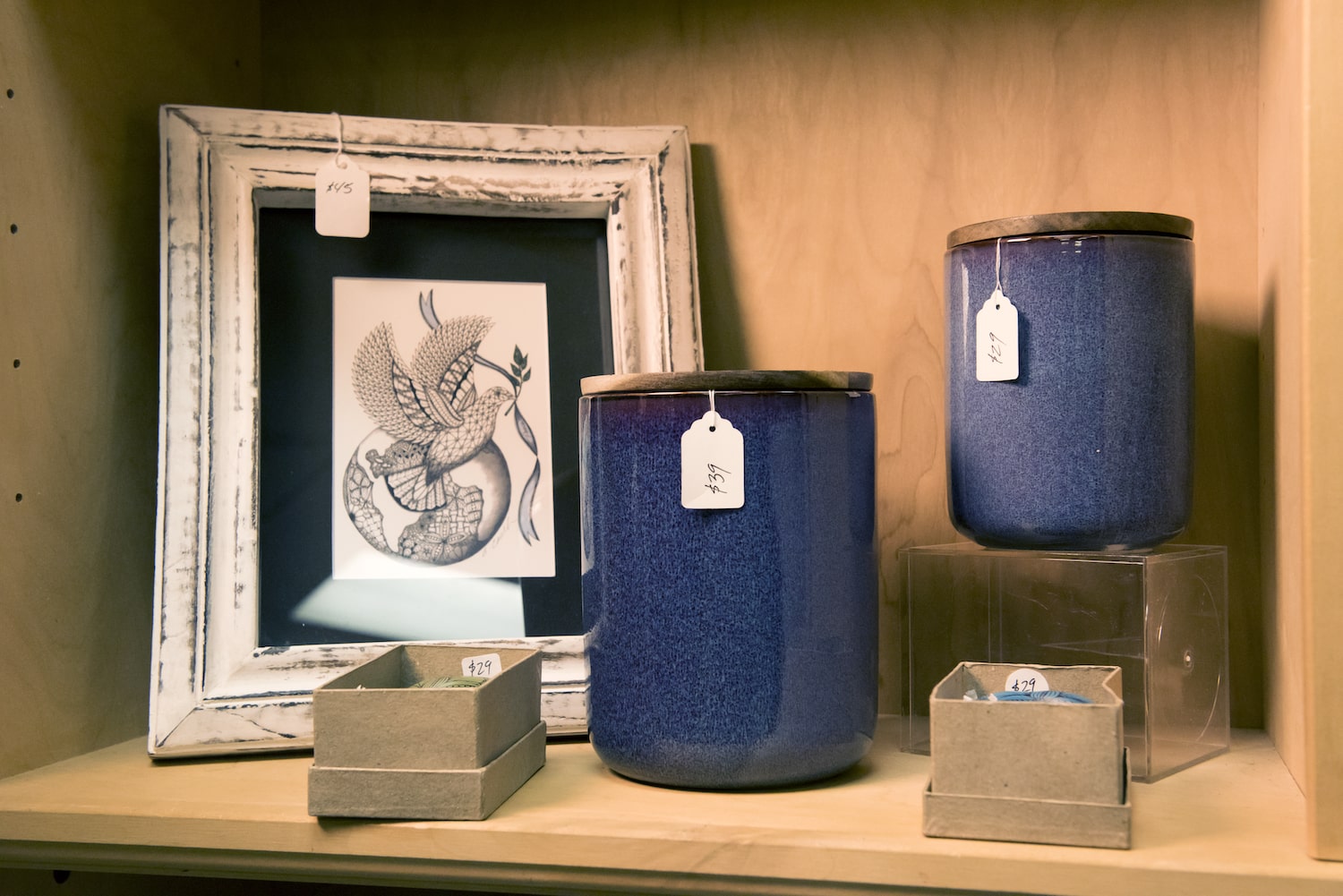
What's the most rewarding part about what you do?
I love what I do, with a passion. I’m very passionate about it. This is what I get to do everyday. I get to come here and create everyday. I get to do something that I love to do and I get to make money doing it. That’s a philosophy that I pass onto my kids. I’ve told all of them to find something you love doing, something you’re passionate about, and find a way to make that your career. I spent many years in a career that I was not happy in. I made good money doing it, but I just wasn’t happy doing it.
I will retire, die probably with a pen in my hand. And I will be happy.
What's the local art community like?
I am finding that the art community around here is way bigger than I ever thought it was. The longer that I’m in the art world, being at the Summit Art Space, the artist groups that are here, it’s just a hub of artistic activity all the time. Painters, and illustrators, fiber artists. It’s totally inspiring. Somedays I get no work done when I’m here because other artists are in here and we’re talking about different ideas, thinking about things that we can collaborate on, that’s the big thing that I’m working on now. I have this huge space, I don’t want to have to fill this space myself, I’m looking for other artists and young entrepreneurs that are trying to make a name for themselves and make a living. I’m looking at ways to pair what they’re doing with what I’m doing.
How do you deal with challenges?
I walk away, and start something else. It probably took me close to a year to finish [the bull]. It just took me that long to get the exact lines I wanted. I had never had that much difficulty with a piece before. But I wanted it to look a certain way, I kind of wanted to have that mean bull face. But literally I walk away from it and start something else.
Other challenges, I tell everyone, leap! Take a leap of faith, try something new, go outside of your comfort zone, I do that all the time. One of two things is going to happen: you’re going to leap and you’re going to fly, or you’re going to leap and you’re going to fall and you’re going to learn something from it. Either way, it’s better than just doing nothing. Because if you do nothing, you’ll never know. And people ask me all the time, “How did you get so far so quick?” I said “I just keep leaping, sometimes blindly.” So all of this has happened in a very short amount of time. And I just keep leaping and trying new things. I try to be a really genuine person when I’m dealing with other people. I think people know that and I think they can sense that. I try to help other artists, I try to help other people as much as I can.
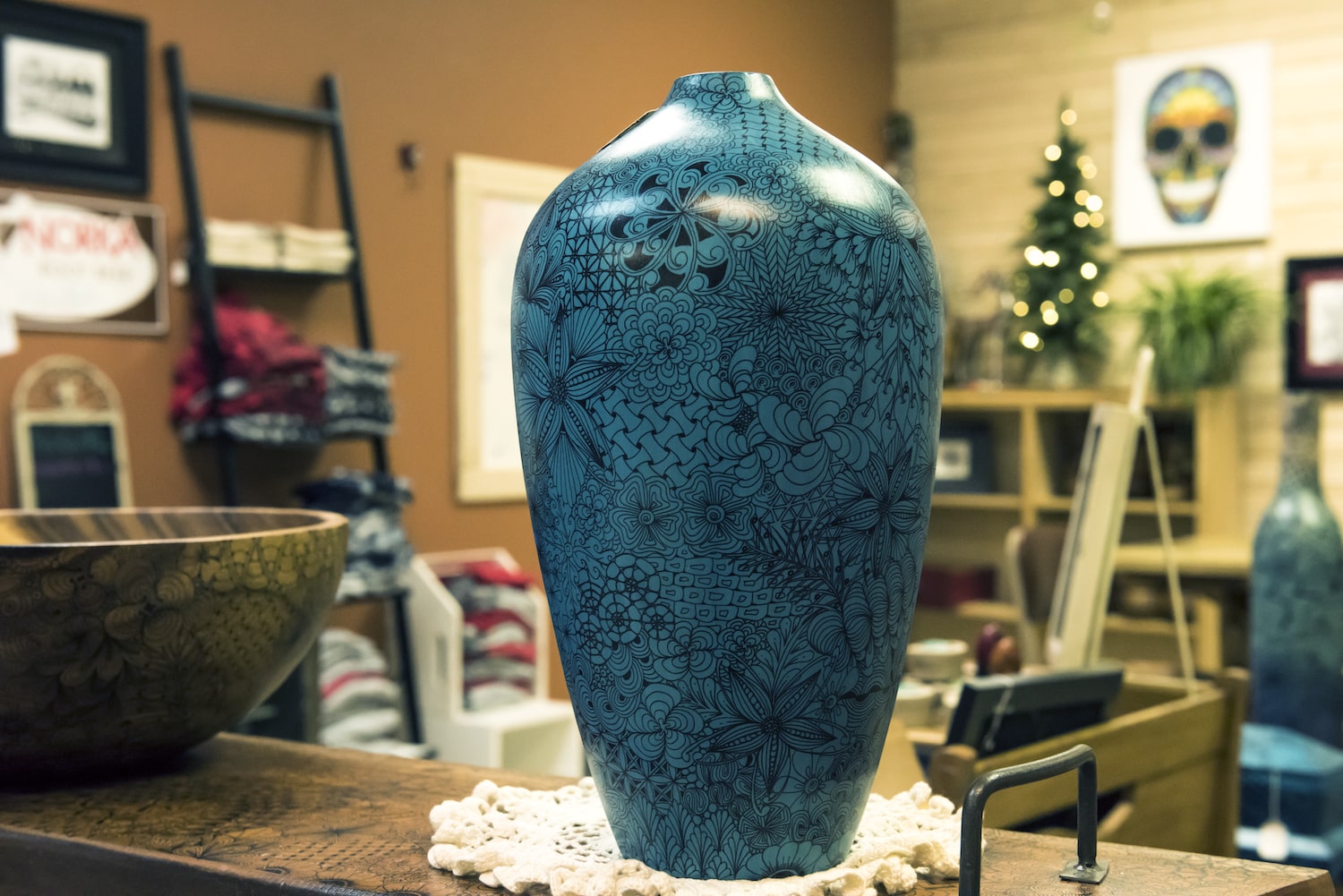
What's next for you?
There is so much new [coming up] for me, I’m so glad show season is over. I just started going over to the tech zone at the library and laser engraving some of my images. So my goal for next year, by Christmas, is to have all of my images laser engraved as ornaments and as wall hangings. So that’s next. After that, I’m looking to do metal as well, I want to do my images on metal. And then I want to do big Don Drumm-size pieces. So that’s the direction that we’re going in the future.
I have lots of designs, I want to create new designs, but I also want to add dimension to the designs that I’m already doing. I still do one-of-a-kind pieces, but at the end of the day, that stuff takes so long. It’s hard to support yourself as an artist trying to sell big things.
I look at art and artists like professional ball players. There aren’t a whole lot of LeBron Jameses coming out of Akron, but there’re a whole lot of basketball players Akron, there are a lot of people enjoying the game, and there’s a lot of people making money from the game. They’re making money doing something they love, but they might not be the star. I’m truly not trying to be the star, I’m trying to have something that’s sustainable and that grows and can support me and my family, and that can leave a legacy for them. So far, so good.



